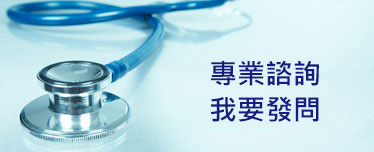壓力與癌症
什麼是壓力,身體是如何應對壓力的?
壓力--也稱之為心理上的壓力—表示人們經歷在精神、身體或情緒下的壓力。
壓力源--引起壓力的因素--可能來自人們的日常責任和例行事務,包括工作、家庭和財務狀況。其他壓力源包括來自外部的因素,如早年生活的困境,暴露在某些環境狀況下、貧窮、歧視,以及健康之社會決定因素的不公平,嚴重的健康問題,如自己或親密的朋友或家人被診斷出癌症,這些也會引起壓力。
身體透過釋放壓力荷爾蒙(如腎上腺素和去正腎上腺素)對外部壓力源作出反應,這些荷爾蒙會使得血壓、心跳速率和血糖數值增加。此種反應,常常稱為「戰鬥或逃跑反應」,它幫助一個人以更大的力量和速度採取行動,以逃避察覺到的威脅。
儘管「戰鬥或逃跑反應」有助於身體處理瞬間的壓力,但當這種反應是由長期或慢性壓力引起時,則它可能是有害的。研究顯示,長期承受壓力的人可能出現消化問題、心臟病、高血壓和免疫系統虛弱。經歷慢性壓力的人也更容易出現頭痛、睡眠問題、注意力不集中、沮喪和焦慮,以及更容易感染病毒,包括引起新冠肺炎COVID-19的SARS-CoV-2病毒(1)。
資料來源: “Stress and Cancer was originally published by the National Cancer Institute.”
萬華醫院社會工作室 張琇鳳主任 協助校閱
更新日期: 2022.11.23
Q1:壓力會導致癌症嗎?
A:儘管慢性壓力會導致許多健康問題,但它是否與癌症有關尚不清楚。迄今為止進行的研究有不同的結果,例如:
- • 一項針對加拿大男性病例的對照研究發現,工作場合的壓力與前列腺癌(攝護腺癌)的風險存在關聯,而一個類似的研究並沒有發現兩者間有這種關聯(2、3)。
- • 一項針對超過10萬名英國婦女所進行的前瞻性研究報告指出,罹患乳癌的風險與受訪者在過去五年所承受的壓力程度或負面生活經歷之間沒有關聯(4)。
- • 一項針對澳洲婦女家族性乳癌風險增加的15年前瞻性研究發現,急性和慢性壓力源、社會支持、樂觀或其他情緒特徵與罹患乳癌的風險它們之間並沒有關聯(5)。
- • 在2008年針對亞洲、澳洲、歐洲和美洲的142個前瞻性研究的統合分析中發現,壓力與較高的肺癌的發生率有關(6)。
- • 2019年對歐洲和北美的9項觀察性研究的統合分析也發現工作壓力與罹患肺癌、大腸直腸癌和食道癌的風險有關(7)。
- • 一項針對歐洲12個世代研究的統合分析發現,工作壓力與罹患肺癌、大直腸癌、乳癌或前列腺癌的風險之間沒有關聯(8)。
即使壓力似乎與罹患癌症風險有關,但這種關聯也可能是間接的。例如,長期處於壓力下的人可能會產生某些不健康的行為,諸如吸菸、暴飲暴食、活動量少或飲酒,這些行為本身都與增加罹患某些癌症的風險有關。
Q2:壓力如何影響癌症病人?
A:在動物模式和實驗室中培養的人類癌細胞,所進行的實驗室研究證據顯示,慢性壓力可能導致癌症惡化(進展)和擴散(轉移)(9-11)。例如,一些研究顯示,當攜帶人類腫瘤的小鼠被限制或與其他小鼠隔離時,會增加壓力的狀況時,他們的腫瘤很有可能生成和轉移(10、12)。
實驗室研究發現,身體的「戰鬥或逃跑反應」,會釋放一部分的正腎上腺素,它們會刺激血管新生和癌細胞轉移(10)。這種荷爾蒙還會啟動嗜中性白血球、它是一種免疫細胞。在某些情況下,嗜中性白血球會幫助腫瘤生長,屏蔽腫瘤細胞使其不被身體的免疫系統發現;它們還可能 "喚醒 "休眠的癌細胞(13)。
慢性壓力也可能導致釋放一類稱為醣類皮質激素的類固醇荷爾蒙,醣類皮質激素可以抑制腫瘤細胞死亡稱細胞凋亡,並增加轉移和抵抗化療的效果(14),它們還可能阻止身體的免疫系統識別和對抗癌細胞(15)。
儘管一些研究,報告指出承受壓力較大的癌症病人存活率會降低(6、16、17),但總體而言,壓力直接影響存活率的證據仍然不足(10)。
Q3:癌症病人應如何學習面對壓力?
A:情感和社會支持可以幫助病人學會如何應對壓力。這種支持能減少病人的沮喪、焦慮以及與疾病和治療相關的症狀程度。華人癌症資訊網中 情緒管理 或 感受癌症 或 學習放鬆提供了應對癌症引起的許多情緒技巧,歡迎前往閱讀。
一些證據顯示,乳癌病人的壓力管理能有更好臨床成效與透過社會支持幫忙有關(10)。社會支持也連結到降低壓力有關的荷爾蒙,這些荷爾蒙會促進卵巢癌的腫瘤進展(10、18)。
應對壓力的另一種方法是進行身體活動的鍛鍊。2018年美國運動醫學會體育活動和癌症預防暨控制的國際多學科圓桌會議的一份報告發現,有 "足夠的 "證據顯示,在癌症治療期間和之後,進行中等強度的身體活動可以減少癌症存活者的焦慮和憂鬱症狀(19),同時也有證據顯示,身體活動有助於預防兒童癌症存活率的憂鬱狀況(20)。
因診斷癌症後而承受巨大壓力的人,可能想詢問他們的醫師,請醫師幫他們轉介適當的身心科專家。事實上,一些專家組織機構都建議,所有的癌症病人應在診斷後盡快以及在治療期間和治療後,用適當的工具(如用心理困擾量表或問卷調查)進行檢測(21、22),以評估他們是否需要幫助處理壓力問題或壓力有關產生的危險事件(23)。
在身心科專業人員的照護下,治療嚴重的痛苦、憂鬱和焦慮,還須包括心理治療(談話治療)和/或抗憂鬱藥或其他藥物治療。治療的選擇應該是個別化的,最好是由病人和醫療團隊共同決定。
研究人員正在研究新的心理治療方法,以減輕癌症病人的憂鬱症狀,如痛苦和絕望。在最近一項隨機臨床試驗中,從被診斷為晚期癌症的人,三至六次量身定做的心理干預治療能減少憂鬱的症狀(24)。試驗結果還顯示,這種方法可能有助於預防晚期病人憂鬱症發作。
另一項隨機臨床試驗比較了兩種不同的、以正念為基礎的認知干預療法,一種是面對面提供幫助,另一種是以電子方式提供--與常規治療相比,都減少了癌症病人的心理壓力(25)。兩種干預方式都減少了痛苦的部分,如對癌症復發的恐懼,並提高了與心理健康相關的生活品質、正念技巧和積極的心理健康。
對使用迷幻藥物治療潛在好處的學術研究再次興起,於是有使用迷幻藥作為輔助心理治療可能發揮的作用的初步證據,在治療與癌症有關的焦慮、憂鬱和存在的痛苦(26)。
如果您現在突然發生焦慮或想要自殘,您可以撥打1995生命線、或衛生福利部24小時安心專線(免付費)電話:0800-788-995、安心專線1925、內政部婦幼保護24小時(免付費)婦幼保護諮詢服務專線:113、各縣市政府衛生局所提供心理相關服務建議、張老師基金會專線電話:1980、法鼓山關懷生命專線(週一至週五早上9點至下午5點) 電話: (02)23118585、內政部男性關懷專線電話:0800-013-999、馬偕協談中心平安線電話:(02)25310505、(02)25318595、老朋友(免費)專線,電話0800-22-8585,每周一至五提供50歲以上熟齡者心理輔導,等等尋求立即協助。
延伸閱讀:
- • 療癒人生
- • 癌症副作用處理:疼痛控制
- • 癌症副作用處理:焦慮與沮喪
- • 癌症照護:感受癌症
- • 癌症照護者的協助資訊
資料來源: “Stress and Cancer was originally published by the National Cancer Institute.”
萬華醫院社會工作室 張琇鳳主任 協助校閱
更新日期: 2022.11.23
- Ayling K, Jia R, Coupland C, et al. Psychological predictors of self-reported COVID-19 outcomes: Results from a prospective cohort study. Annals of Behavioral Medicine 2022; 56(5):484–497.
- Blanc-Lapierre A, Rousseau M-C, Weiss D, et al. Lifetime report of perceived stress at work and cancer among men: A case–control study in Montreal, Canada. Preventive Medicine 2017; 96:28–35.
- Blanc-Lapierre A, Rousseau M-C, Parent M-E. Perceived workplace stress is associated with an increased risk of prostate cancer before age 65. Frontiers in Oncology 2017; 7:269.
- Schoemaker MJ, Jones ME, Wright LB, et al. Psychological stress, adverse life events and breast cancer incidence: A cohort investigation in 106,000 women in the United Kingdom. Breast Cancer Research 2016; 18(1):72.
- Butow P, Price M, Coll J, et al. Does stress increase risk of breast cancer? A 15-year prospective study. Psychooncology 2018; 27(8):1908–1914.
- Chida Y, Hamer M, Wardle J, Steptoe A. Do stress-related psychosocial factors contribute to cancer incidence and survival? Nature Clinical Practice. Oncology 2008; 5(8):466–475.
- Yang T, Qiao Y, Xiang S, et al. Work stress and the risk of cancer: A meta-analysis of observational studies. International Journal of Cancer 2019; 144(10):2390–2400.
- Heikkilä K, Nyberg ST, Theorell T, et al. Work stress and risk of cancer: Meta-analysis of 5700 incident cancer events in 116,000 European men and women. BMJ 2013; 346:f165.
- McDonald PG, Antoni MH, Lutgendorf SK, et al. A biobehavioral perspective of tumor biology. Discovery Medicine 2005; 5(30):520–526.
- Moreno-Smith M, Lutgendorf SK, Sood AK. Impact of stress on cancer metastasis. Future Oncology 2010; 6(12):1863–1881.
- Eckerling A, Ricon-Becker I, Sorski L, Sandbank E, Ben-Eliyahu S. Stress and cancer: Mechanisms, significance and future directions. Nature Reviews. Cancer 2021; 21(12):767–785.
- Sloan EK, Priceman SJ, Cox BF, et al. The sympathetic nervous system induces a metastatic switch in primary breast cancer. Cancer Research 2010; 70(18):7042–7052.
- Perego M, Tyurin VA, Tyurina YY, et al. Reactivation of dormant tumor cells by modified lipids derived from stress-activated neutrophils. Science Translational Medicine 2020; 12(572):eabb5817.
- Volden PA, Conzen SD. The influence of glucocorticoid signaling on tumor progression. Brain, Behavior, and Immunity 2013; 30 Suppl(0):S26–31.
- He XY, Ng D, Van Aelst L, Egeblad M. Stressing out about cancer immunotherapy. Cancer Cell 2019; 36(5):468–470.
- Lu D, Andrae B, Valdimarsdóttir U, et al. Psychologic distress is associated with cancer-specific mortality among patients with cervical cancer. Cancer Research 2019; 79(15):3965–3972.
- Lu D, Andrae B, Valdimarsdóttir U, et al. Psychologic distress is associated with cancer-specific mortality among patients with cervical cancer. Cancer Research 2019; 79(15):3965–3972.
- Lutgendorf SK, DeGeest K, Dahmoush L, et al. Social isolation is associated with elevated tumor norepinephrine in ovarian carcinoma patients. Brain, Behavior, and Immunity 2011; 25(2):250–255.
- Campbell KL, Winters-Stone KM, Wiskemann J, et al. Exercise guidelines for cancer survivors: Consensus statement from international multidisciplinary roundtable. Medicine and Science in Sports and Exercise 2019; 51(11):2375–2390.
- Tonorezos ES, Ford JS, Wang L, et al. Impact of exercise on psychological burden in adult survivors of childhood cancer: A report from the Childhood Cancer Survivor Study. Cancer 2019; 125(17):3059–3067.
- Smith SK, Loscalzo M, Mayer C, Rosenstein DL. Best practices in oncology distress management: Beyond the screen. American Society of Clinical Oncology Educational Book 2018; 38:813–821.
- Hinz A, Mehnert A, Kocalevent RD, et al. Assessment of depression severity with the PHQ-9 in cancer patients and in the general population. BioMed Central Psychiatry 2016; 16:22.
- Artherholt SB, Fann JR. Psychosocial care in cancer. Current Psychiatry Reports 2012; 14(1):23–29.
- Rodin G, Lo C, Rydall A, et al. Managing cancer and living meaningfully (CALM): A randomized controlled trial of a psychological intervention for patients with advanced cancer. Journal of Clinical Oncology 2018; 36(23):2422–2432.
- Compen F, Bisseling E, Schellekens M, et al. Face-to-face and internet-based mindfulness-based cognitive therapy compared with treatment as usual in reducing psychological distress in patients with cancer: A multicenter randomized controlled trial. Journal of Clinical Oncology 2018; 36(23):2413–2421.
- Ross S. Therapeutic use of classic psychedelics to treat cancer-related psychiatric distress. International Review of Psychiatry 2018; 30(4):317–330.
資料來源: “Stress and Cancer was originally published by the National Cancer Institute.”
萬華醫院社會工作室 張琇鳳主任 協助校閱
更新日期: 2022.11.23


